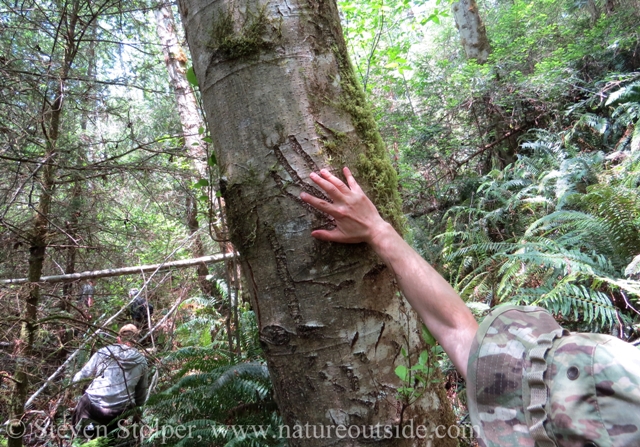
You don’t tug on Superman’s cape, and you don’t go looking for the bear. I’m too polite for the former but just dumb enough for the latter.
I spent a few days last week in a bear trailing class. Trailing is animal tracking taken to the next level.
Animal tracking gives you the skill to “read the newspaper” of the forest. By reading the signs animals leave behind, you learn what creatures are near and what they’ve been doing. Trailing is when you use your tracking skills to follow animals through the forest. If you are good, and lucky, you can catch up to the animals that made the tracks.
I enjoy observing and photographing wildlife. So trailing is a useful skill for me. I also hike and backpack in bear country. Knowing bear behavior and the signs they leave behind can help me avoid an unpleasant confrontation.
You can read hundreds of books (or blog posts) about bears. But to truly learn about them you need to get into the forest and experience them. The trailing class was a great opportunity to do that. What makes it exciting is that the bear is the teacher!
Meet Ursus americanus
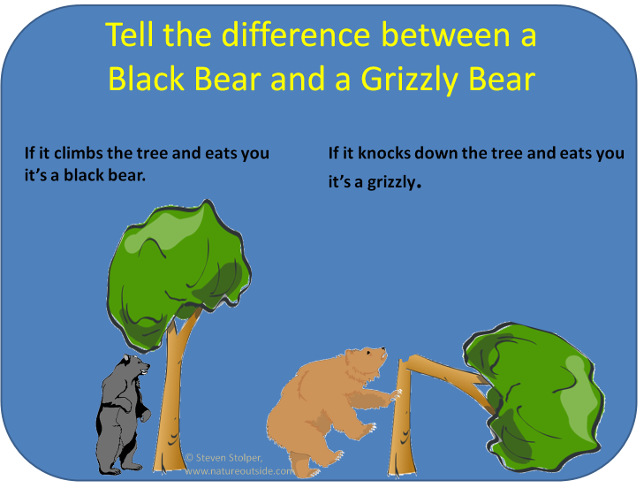
An old bear joke
Behavior
Black bears lead solitary lives and tend to be shy. They prefer to run from human contact. But they are curious even about things that scare them (as we shall see).
They have excellent smell and hearing that they use to locate prey, detect danger, and communicate with other bears.
In wild areas Black bears are diurnal. They feed during the day interspersed with many rest periods. Bears may spend up to 50% of their waking time resting between feeding sessions. They curl up beneath berry bushes or inconspicuously at the base of a large trees. So you must be vigilant that you don’t stumble into them unawares.
Bears walk much faster than we do. But don’t imagine a 500 lb goliath bulldozing its way through the forest, snapping twigs and trampling vegetation. Nothing can be farther from the truth. They are remarkably light on their feet. Bears creep silently and carefully through the forest.
When bears think they are being pursued, they snake through impossibly dense brush. Their agility surprised me several times as we tracked them. And I collected a variety of scratches, bumps and bruises trailing them through the underbrush.
Black bears are powerful animals as well. They can sprint up to 35 mph over short distances and rip trees apart with teeth and claws. Adult bears have few predators other than man.
Diet
85% of a Black bear’s diet is vegetation. They are generalist omnivores with a wide ranging diet. They are thought to defecate every 4.5 hrs. I found it easy to locate bear scat in heavily traveled areas.
The bears practice a version of the seasonal round. In spring, they dine on the tender green shoots of growing plants. They eat grasses and herbaceous vegetation as well as the sap-rich cambium layer of trees. During summer, they prey on young animals and insects. They consume berries and fruits as they ripen. Their autumn diet consists mainly of berries, fruits, and nuts.
Bears are opportunistic and will scavenge carcasses, consume insects, and even pilfer bird’s eggs. They’ll eat anything that will fit in their mouths. A bear’s home range varies inversely to food availability. If food is scarce, bears will wander far afield in search of their next meal.
Bear Sign
Bears communicate with others of their kind by scent, sound, and visually.
Females dribble urine continuously, leaving behind information about their identity and physical state. I call this type of olfactory communication “checking your Pmail.”
Bears often mark trees visually and with scent along their travel routes and at access points to feeding areas. They stand on their hind legs and rub their backs on the trunks to transfer their scent. They also bite and claw the trees with their sharp canine teeth. When I notice a tree marked in this way, I search the trunk to see if I can find hair caught in the bark.
Bears also scent-mark with their feet as they walk. You can smell “bear” in their tracks. It was a tool I used to help track them. I noticed particularly strong scent whenever a bear trod on a downed tree limb. Sometimes a bear will twist its foot to grind its scent into the soil.
Feeding bears leave characteristic sign. Chewed stems and leaves are prominent on larger plants like Skunk Cabbage (Symplocarpus foetidus). And when you pass a redwood tree barked by a hungry bear, you know it!
Hibernation
The bears we tracked did not hibernate. The winter months are mild enough to supply food to keep them awake.
But Black bear hibernation is an amazing phenomena. Bears hibernate for months without eating, drinking, or defecating. Imagine a person bedridden for 90 days. He would lose more than 90% of his muscle mass. Bears lose only 23% of their muscle mass hibernating for the same period. They reduce their metabolism 50-60% and lose about .5 lb/day of body weight. Their heart rates plummet from 40-50 bpm to only 8-19 bpm.
The key to successful hibernation appears to be plentiful food in autumn and spring. The autumn food builds energy reserves and the spring food replenishes lost body weight. Well fed bears enter dens before thin ones. Thin bears spend extra time building fat reserves to see them through the winter.
Making Camp
Our base camp was Gold Bluffs Beach Campground along the Pacific Ocean in Northern California. It’s located just south of the Klamath River, near the Oregon border. The campground is part of Prairie Creek Redwoods State Park, adjacent to Redwood National and State Parks. It’s a great place to camp.
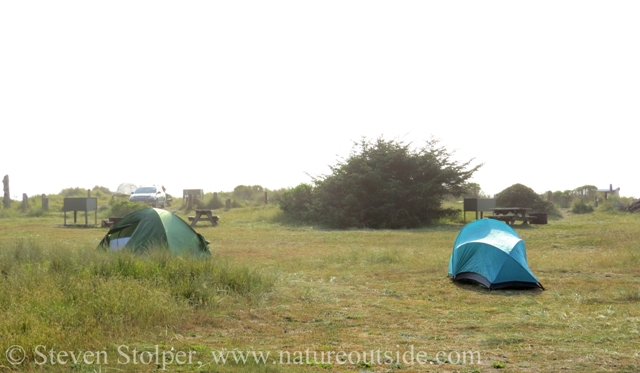
The Pacific Ocean is just beyond the line of bushes. My tent has the teal rainfly.
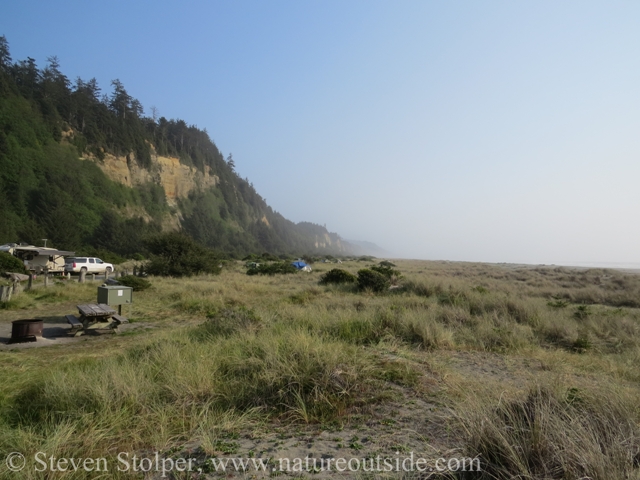
Looking south from the campsite
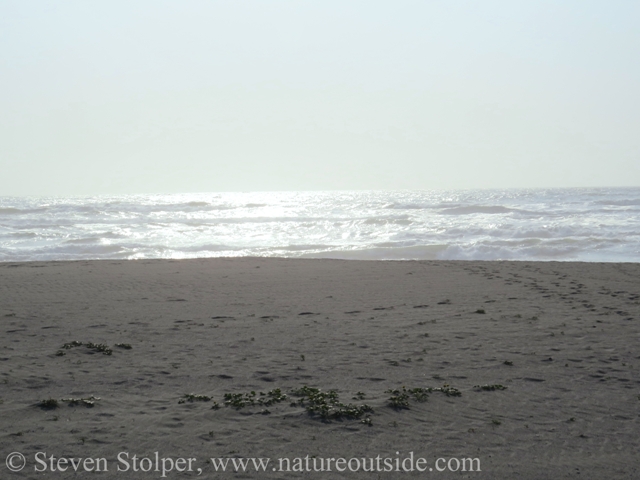
Pristine beach beyond the campsite
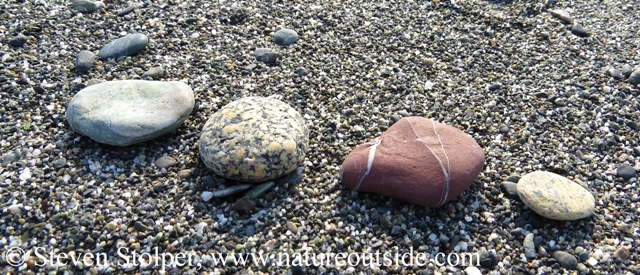
I have been seeing photos of colorful rocks on the beach. So I thought I’d try one. I forgot the name for this type of photo.
Dean, one of the students, is also a fishing guide. He waded into surf and landed a 14-inch Redtail surfperch (Amphistichus rhodoterus). These fish are commonly found in shallow water offshore sandy beaches. Dean used a sand crab to catch this one.
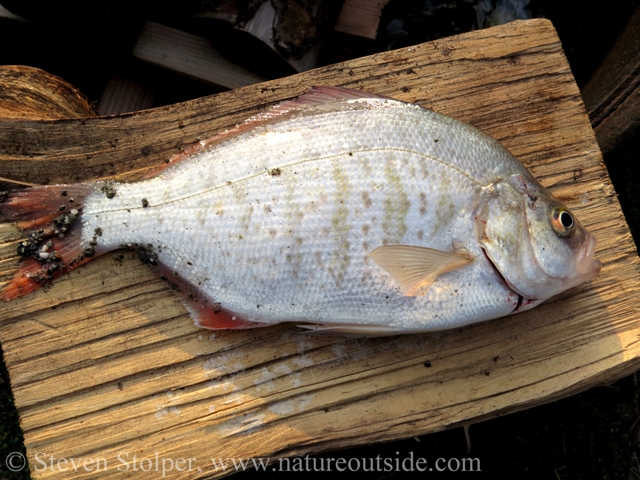
Redtail Surfperch (Amphistichus rhodoterus)
Redtails are a good eating fish with a mild flavor. We used fillets from this one for fish tacos the second night.
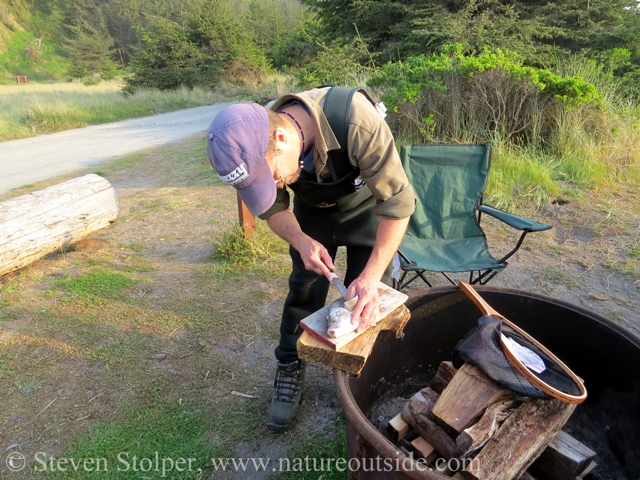
Dean filleting the fish.
After dinner I strolled the beach, snapping pictures of the sunset.


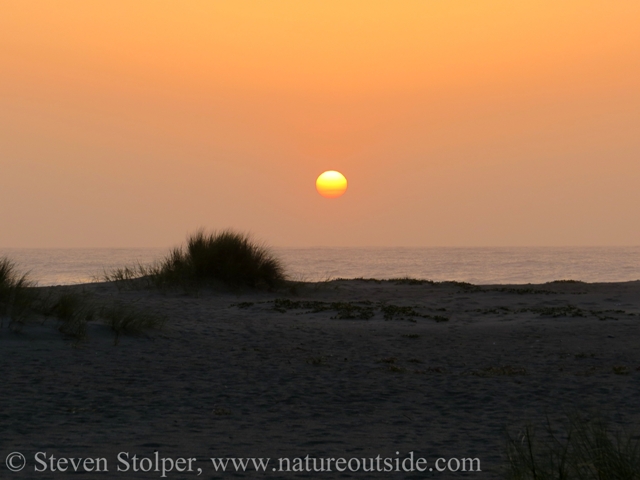
Suddenly, I was treated to a mesmerizing experience. A flock of endangered Marbled Murrelets flew overhead. They commute to their redwood homes after a long day foraging many miles offshore. I could not see the small birds. They fly more than 70 mph and scientists track them by radar. But I could hear their distinctive “Keer! Keer!” calls start out over the ocean, sweep above my head, and disappear just as quickly to the east.
Then it was time to settle in for the night. We had an early start the next morning to trail some bears…
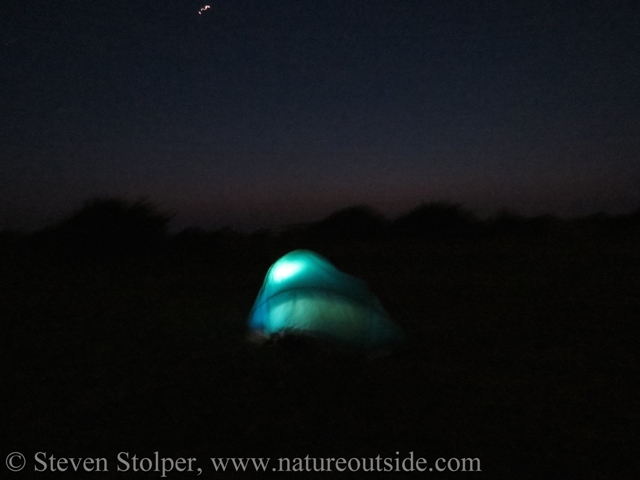
Stalking the Black Bear – High Adventure in the Forest (Part 2)
Stalking the Black Bear – High Adventure in the Forest (Part 3)
Stalking the Black Bear – High Adventure in the Forest (Part 4)
Other Tracking Articles on NatureOutside
Mountain Lion Tracks – Learn to Read Them
Mysteries on the Beach (Part 1)
Wolves Teach a Master Class (Part 1)
References
Peterson Reference Guide to the Behavior of North American Mammals, Elbroch and Rinehart, 2011
For fun facts and useful tips, join the free Bushcraft Newsletter.



Leave a Comment